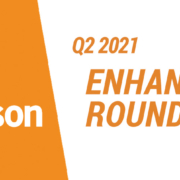How to Make Marketing Automation Successful
 Marketing automation has been around for over a decade. However, it’s only recently that awareness and adoption of marketing automation has increased exponentially. In this article we’ll discuss one of the major issues facing marketers when adopting a marketing automation system. By reading this article you’ll get a better understanding of how to make marketing automation successful.
Marketing automation has been around for over a decade. However, it’s only recently that awareness and adoption of marketing automation has increased exponentially. In this article we’ll discuss one of the major issues facing marketers when adopting a marketing automation system. By reading this article you’ll get a better understanding of how to make marketing automation successful.
Although adoption is skyrocketing, analyst data suggests marketers still face some of the problems which marketing automation solves.
Analysts take on challenges facing marketers:
In 2010 Marketing Sherpa conducted a survey that showed 78% of marketers list generating a high quality lead as their top challenge
In 2010 Frost & Sullivan reported 44% of those who own marketing automation said that insufficient processes was an obstacle to success
Furthermore, Jonathan Block of Serius Decisions provided research in December 2010 that compared companies using marketing automation with a process in place vs. those that did not have a process in place. The results are astonishing. Companies that had a process in place yielded the following benefits:
- A 366% increase in sales accepted leads
- A 416% increase in closed deals
- $570,000 in more revenue
Our take away from this data is that marketing automation cannot stand alone without a proper process supporting it. You can buy the nicest sewing machine on the market but you’ll never make the best clothes unless you learn how to use the sewing machine and have a design, implementation and execution plan in place. The sewing machine will not sew the clothes for you without proper training and management. Similarly, marketing automation will not automate marketing for you. Don’t fire your marketing staff quite yet.
Three steps to marketing automation success
What process should companies follow? It’s really quite simple actually and can be accomplished in three steps.
First, companies must understand what processes they currently have and, more importantly, do not have. Conduct an audit on your organization to better understand your lead management process. Document your findings. Focus on how leads enter and exit the sales funnel.
Second, define your new and improved process in a document. We suggest creating a Service Level Agreement, or SLA, to accomplish this. The SLA is a single document that governs the lead management process established for your business.
Depending on the scope of your business and needs, the SLA might include ideal customer profiles, definitions of a lead, lead scoring models, how to respond to a lead, how to distribute a lead, lead nurturing programs, metrics to measure, and sales and marketing responsibilities. Your SLA should serve as a working foundation for your sales and marketing process and be approved/supported by your executive team.
Finally, adopt a Revenue Generation Framework that delivers solutions to satisfy your process. Lead Liaison’s provides Revenue Generation Software that accomplishes just that. The Software includes the following solutions:
- Sales Prospecting
- Database Segmentation
- Lead Tracking
- Lead Qualification
- Lead Distribution
- Lead Nurturing
- Inbound Marketing
- Metrics
By leveraging a revenue generation system such as Lead Liaison to provide the proper framework and adhering to the policies defined in your SLA you’ll make marketing automation successful.
To be alerted of future posts, please click on the RSS button.



